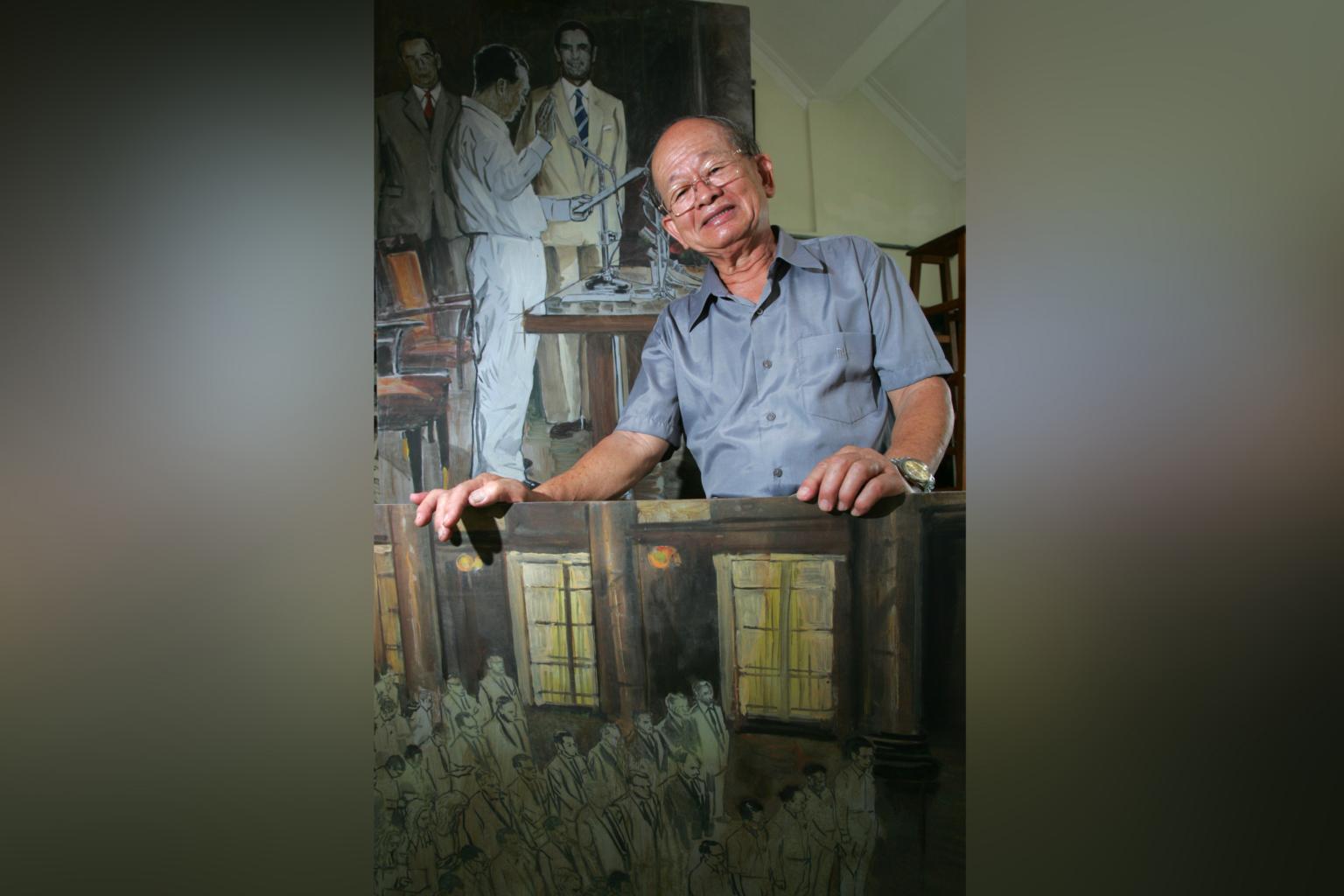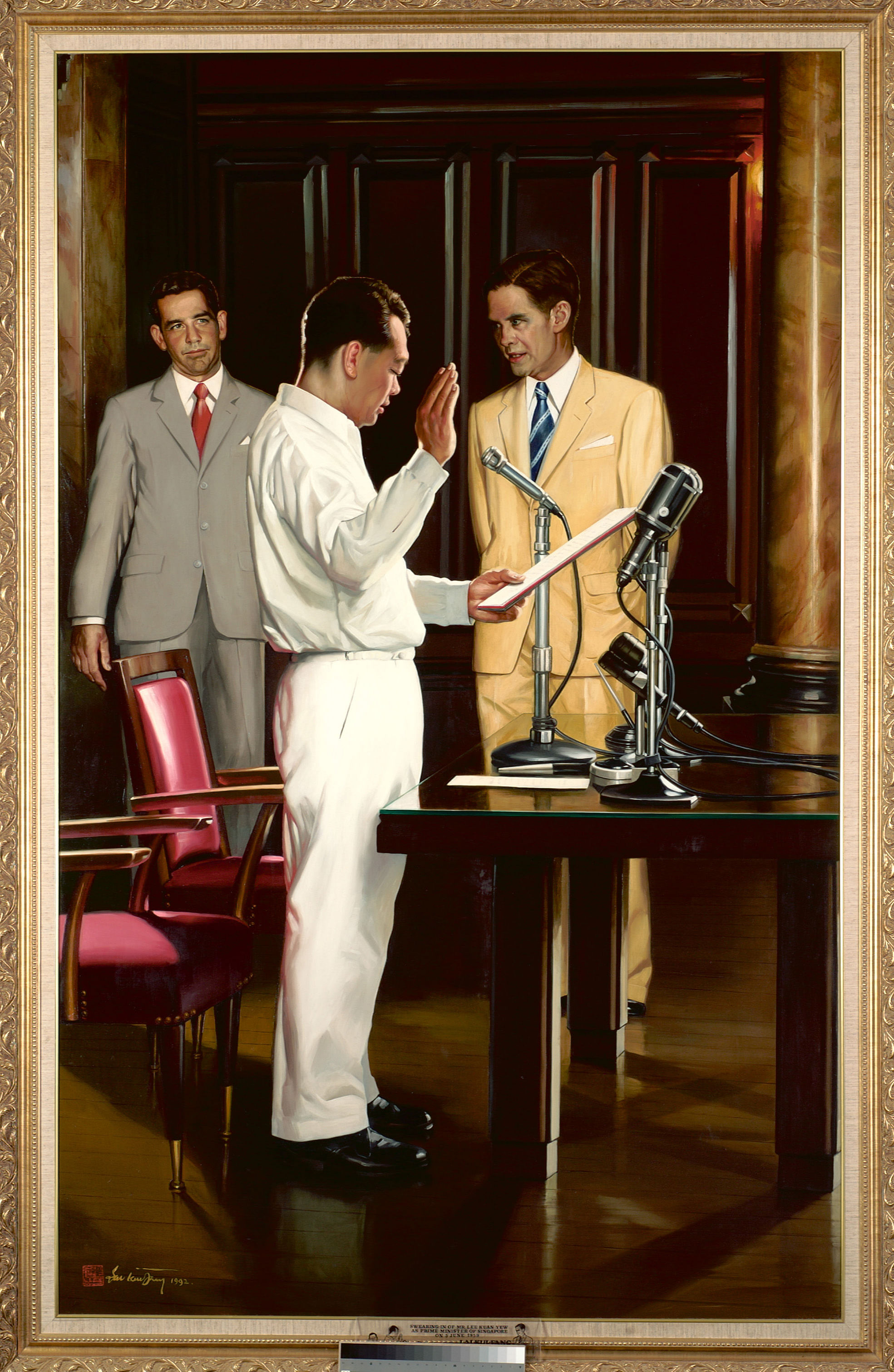Artist Lai Kui Fang, known for historical paintings of Singapore, dies at 86
Sign up now: Get ST's newsletters delivered to your inbox

Local artist Lai Kui Fang was known for his oil paintings often of historical figures or scenes.
PHOTO: LIANHE ZAOBAO
Follow topic:
SINGAPORE - Local artist Lai Kui Fang died on Friday (Aug 12), aged 86. According to his obituary, he passed away peacefully in his sleep. He is survived by his wife, son and daughter.
Mr Lai was known for his oil paintings drawing from the European classical, Romantic and realistic tradition, often of historical figures or scenes.
One of his best-known works is his re-creation of the landmark 1959 moment when the late Mr Lee Kuan Yew was sworn in as Singapore's first Prime Minister.
The Johor-born Mr Lai cultivated his artistic interest and skill at a young age, when the Japanese invaded Singapore in 1942. He was then six years old.
"When the Japanese troops moved in, my family went into the forest in Labis, Johor. We didn't have a school, of course, so we'd just play with marbles, catch spiders, swim and fish. And I was so free, I started drawing," he told The Straits Times in a 1995 interview.
"The environment in the forest was conducive. I drew snakes, butterflies, tigers - there were a lot of wild beasts then - and other animals that I saw around me. They were very beautiful and gave me inspiration."
Though his father, who was from mainland China, wanted him to pursue medicine, Mr Lai moved to Singapore as a youth and enrolled in the Nanyang Academy of Fine Arts. In 1963, he received a French government scholarship to study at the L'Ecole Nationale Superieure Des Beaus Arts in Paris, and spent the next 15 years in France.
He also amassed dozens of awards during that time, including the Knight and Officer of the French Order of Arts and Letters in 1968.
Back in Singapore, wealthy professionals often commissioned him to bring important figures and scenes to life in his chosen medium of oil paint.
Among his commissions included historical paintings depicting the signing of the Japanese surrender treaty and a discussion led by General Percival as he decided on Britain's surrender of Singapore - each with a reported $300,000 price tag in the mid-1990s.
Mr Lai's famous painting of Mr Lee's swearing-in as Prime Minister relied on witness recollections, as there were no photographic records of the event.

The work also shows Sir William Goode, the last governor of Singapore (to the right), and an unnamed aide-de-camp to the left.
Another well-known work by Mr Lai is his depiction of a construction scene in Beach Road, which was included in the National Gallery's collection when it opened in November 2015.
In addition to his skill as a painter, Mr Lai also proved himself an accomplished sculptor.
But this part of his portfolio led him into a corruption scandal in the mid-1990s. According to a report in The Straits Times in 1997, Mr Lai offered a $20,000 bribe to a school principal's wife in 1996 for help in getting a contract to build a statue for Pei Chun Public School.
He was subsequently found guilty of corruption and of giving false information to the Corrupt Practices Investigation Bureau and fined $25,000.
Mr Lai kept a lower profile in his later years, but in 2007, the French embassy in Singapore awarded him the Knight in the National Order of Merit for his "intense and genuine interest in French culture", according to then-French Ambassador to Singapore, Mr Pierre Buhler.

